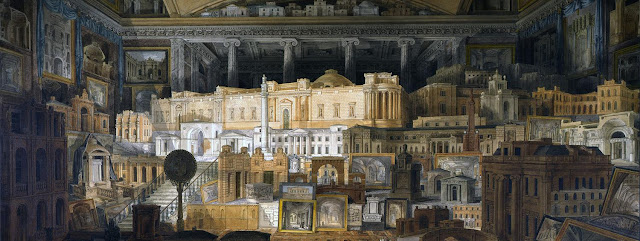MoDA KATAGAMI IN PRACTICE: WAVES
 |
| Katagami Stencil of a wave/water motif within Moda's archive |
 |
Silver Studio Design by Arthur Silver distemper on woven jute 1895 within Moda's archive |
 |
Digital version of the wave/water katagami stencil repeated horizontally |
 |
| Paper version of the wave/water katagami stencil using a hand cut paper technique that has involved removing paper to create a pattern within the paper textiles |
I'm currently using my commission at Moda to research the museum's archive collection of katagami stencils and the Silver Studio Collection to develop, design and make a costume installation that explores the aesthetic relationship between dynamic origami practiced within the Bauhaus and traditional print motifs found in the Katagami collection and the Silver Studio Design collection. My practice-led research is focused on how Japanese cut paper stencils can be combined with origami to generate new textile paper costumes that explore space, form and movement.
I've been hand cutting a reproduction of this wave motif as a repeat pattern on mulberry paper and using the removed paper cuts from this textile to mount onto paper to create a second paper textile. These are to be finished and folded into origami forms. It has been meticulous and time consuming work that has made me understand the level of skill required to make these patterns and how the repeat works for printing onto kimonas. Some of the details within these paper motifs are too delicate to replicate using digital technology, such as laser cutting, at the same scale as the original Japanese stencils and can only be reproduced by hand.
I still wish to explore a combination of the hand and the digital within this project and have created a digital print of the motif that features the pattern in addition to creating an illustration file for use on a laser cutting machine. I plan to explore producing laser cut versions of this motif and digital prints as a contemporary craft update of this traditional textile process.
The next stage of this project involves testing materials and techniques both traditional and contemporary. I'm investigating Japanese papers, such as mulberry papers, that were, that have been used in traditional Japanese clothing , in addition to exploring tyvek, a synthetic paper material used for architectural structures, high-end fashion and municipal clothing that requires a tough, resistant surface textile.
This project is supported by Designation Development Funding from the Arts Council England.



Comments
Post a Comment